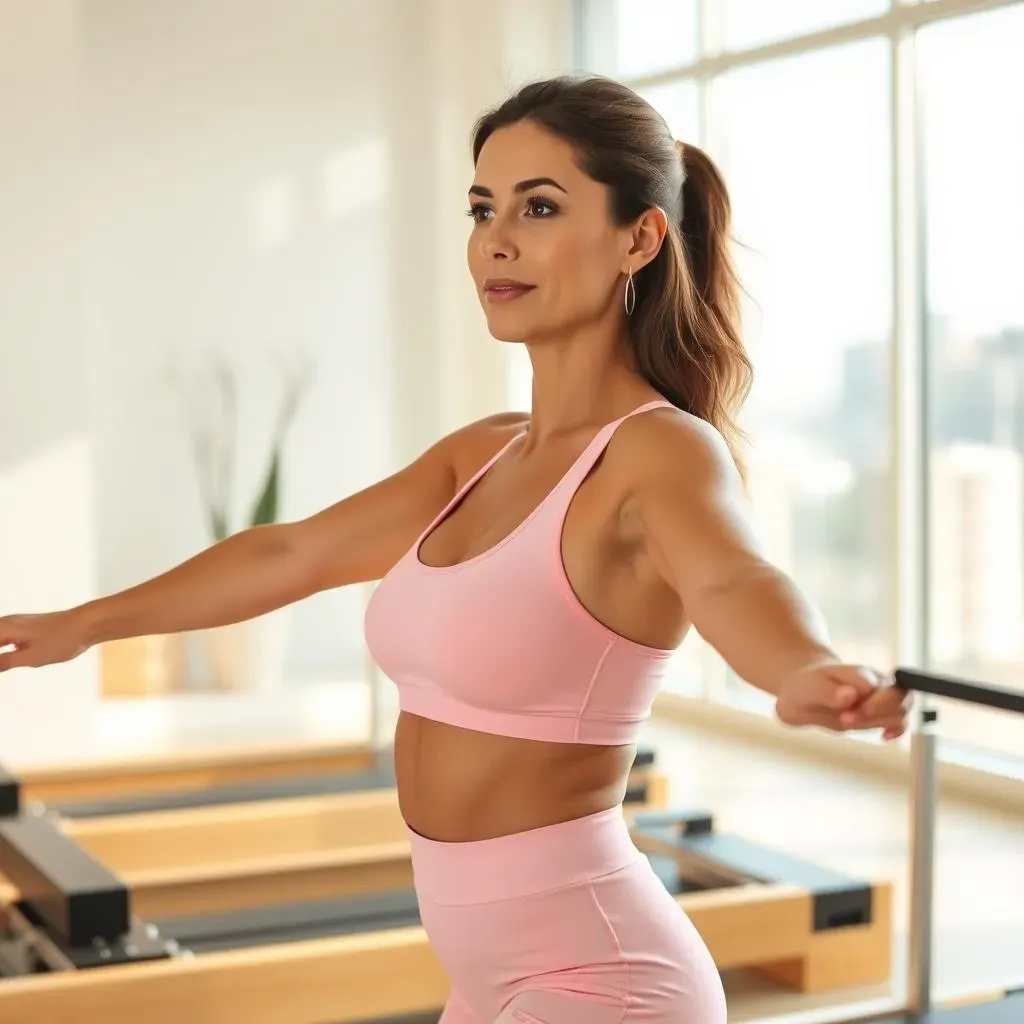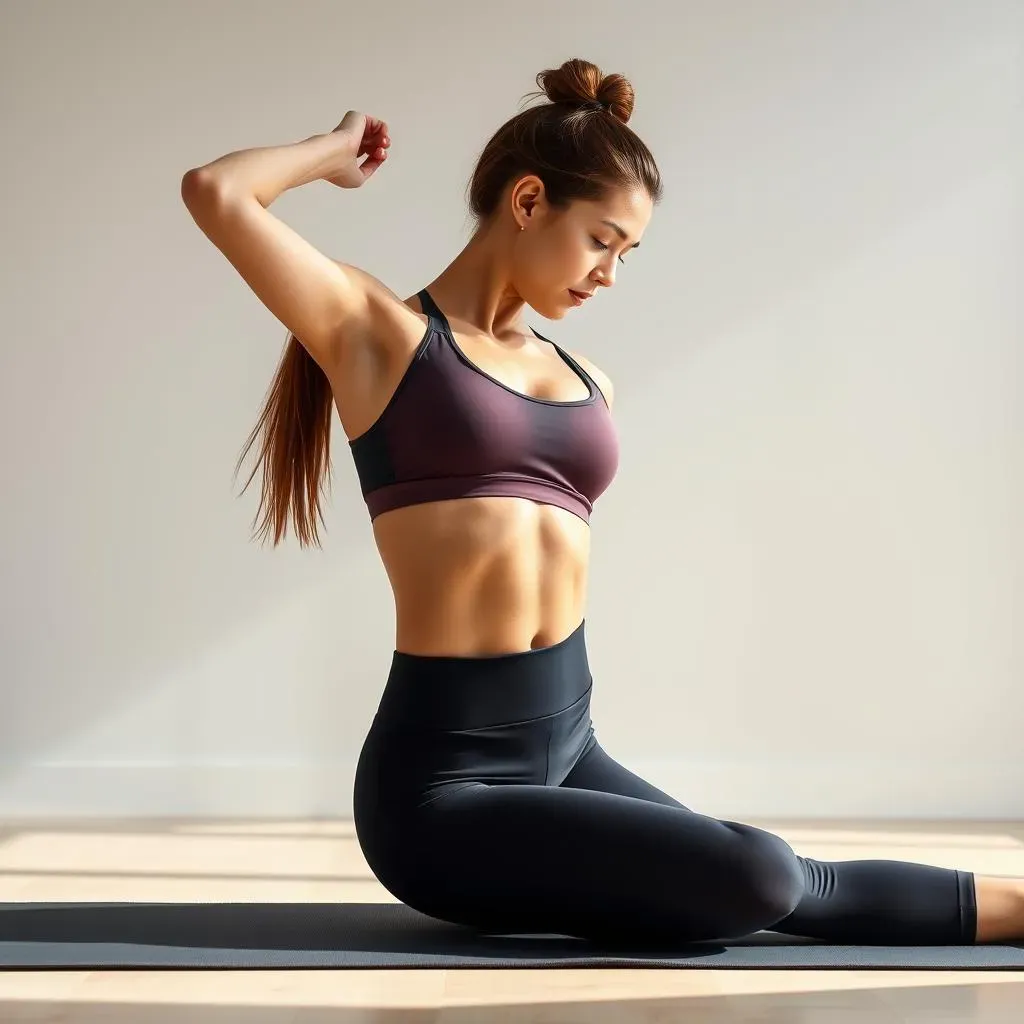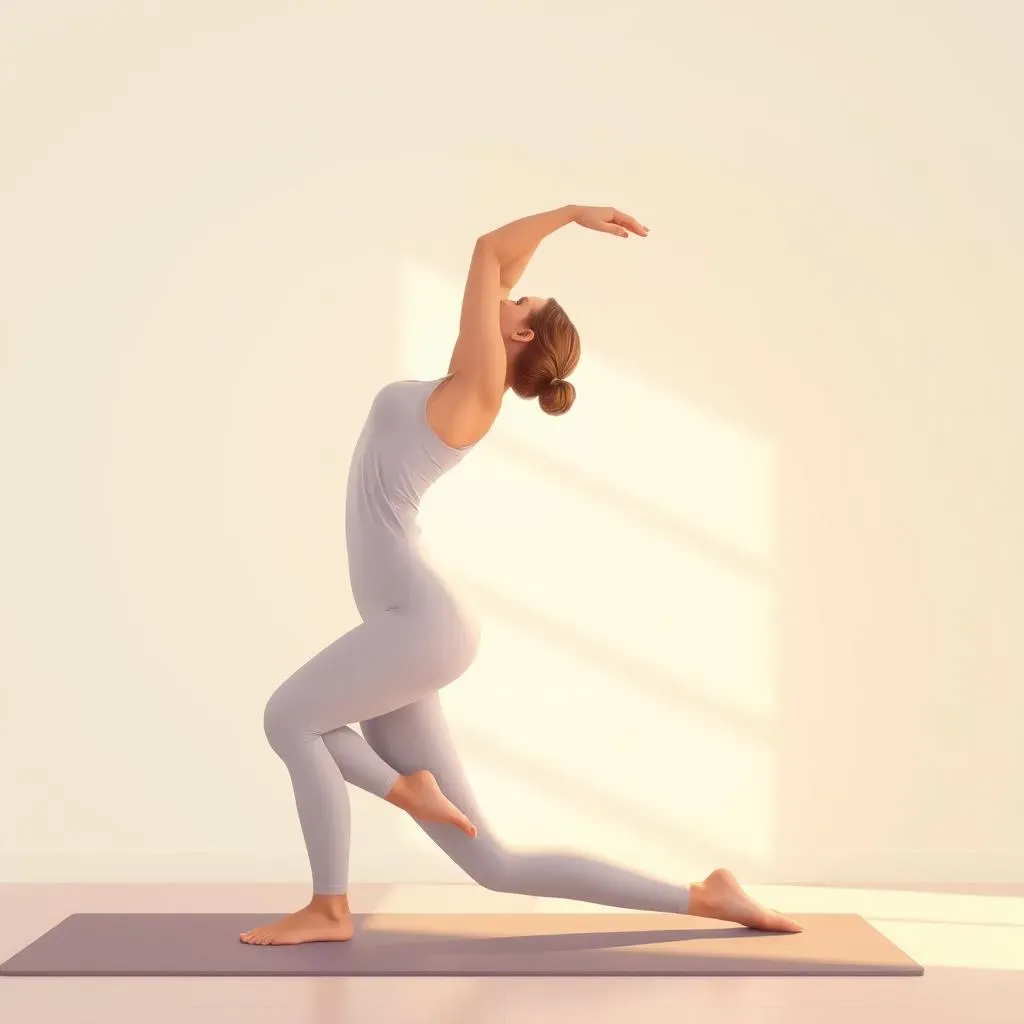Table of Contents
Short on time but craving a fantastic workout? Then get ready to ditch the gym membership and discover the power of a "pilates workout at home in 20 minutes"! This isn't your grandma's Pilates; we're talking a dynamic, full-body routine designed to sculpt your muscles, strengthen your core, and boost your flexibility, all without needing fancy equipment or hours of your day. In this article, we'll first explore the incredible benefits Pilates offers, revealing how this low-impact powerhouse can transform your body and mind. Next, you'll get a step-by-step guide to a killer 20-minute Pilates routine, complete with clear instructions and modifications for all fitness levels. Finally, we'll tackle some common questions and provide you with tips and tricks to maximize your results and make your home Pilates practice a sustainable part of your life. So, grab your mat, find a quiet space, and let's get started on your path to a stronger, more flexible, and incredibly confident you!
Unlock Your Core: The Amazing Benefits of Pilates

Unlock Your Core: The Amazing Benefits of Pilates
Core Strength That's Out of This World
Let's talk core strength. It's not just about having washboard abs; a strong core is the foundation for everything you do – from bending over to pick up your cat to nailing that killer yoga pose. Pilates is like a secret weapon for building that core strength. It focuses on those deep, stabilizing muscles that support your spine and improve your posture. Think of it as building a skyscraper: you need a solid foundation (your core) before you can add all the fancy floors (the rest of your body). And the best part? You don't need bulky weights or fancy equipment. Just your body and a mat. If you're looking for a more intense workout, you might want to check out our Pilates with dumbbells guide!
Pilates isn't just about crunches; it's about mindful movement and precision. You'll learn to control your body in ways you never thought possible. Imagine lifting a feather; that's the level of control Pilates aims for. This precision builds strength and stability, reducing your risk of injury in everyday activities. Plus, a strong core can help alleviate back pain, a common problem for many people. If you're struggling with back pain, check out our guide to Pilates for back pain relief.
Benefit | How Pilates Helps |
|---|---|
Improved Posture | Strengthens core muscles, supporting the spine. |
Reduced Back Pain | Improves core stability, reducing strain on the back. |
Increased Flexibility | Focuses on controlled movements through a full range of motion. |
Flexibility That'll Blow Your Mind
Ever wished you could touch your toes without feeling like you're about to snap in half? Pilates is your answer. It's amazing for improving flexibility, not just in your usual suspects (like your hamstrings), but also in those hard-to-reach places, like your shoulders and hips. This increased flexibility doesn't just look good; it feels good too. It helps improve your range of motion, making everyday tasks easier and more comfortable. Ever wanted to improve your flexibility? Then check out our Pilates for Flexibility guide!
Think of your body as a garden. If you don't stretch and move your muscles regularly, they get stiff and inflexible, like untended plants. Pilates is like regular watering and weeding – it keeps everything supple and healthy. The controlled movements and stretches help lengthen and strengthen your muscles simultaneously, which is key for improving your flexibility and preventing injuries. For beginners, we have a great Pilates for beginners guide.
- Improved joint mobility
- Increased range of motion
- Reduced muscle stiffness
- Better balance and coordination
Body Awareness: The Secret Sauce of Pilates
Pilates isn't just about physical strength; it’s a journey of self-discovery. It teaches you to become incredibly aware of your body, how it moves, and how it feels. This body awareness is a superpower. It helps you identify imbalances, improve your posture, and prevent injuries before they happen. It's like having an internal GPS for your body. You'll become more attuned to your physical sensations, leading to a greater sense of control and confidence in your movement.
This heightened body awareness extends beyond the mat. You'll find yourself sitting taller, moving with more grace, and feeling more connected to your body in all aspects of your life. It’s a holistic approach to fitness that strengthens not only your muscles but also your mind-body connection. This improved body awareness can help you in other areas of your life, like your posture.
Your 20Minute Pilates Power Plan: A StepbyStep Guide

Your 20Minute Pilates Power Plan: A StepbyStep Guide
Warm-Up: Getting Your Body Ready to Roll
Before we dive into the main exercises, a quick warm-up is crucial. Think of it as prepping your engine before a road trip – you wouldn't just jump in and floor it, would you? A simple 5-minute warm-up gets your blood flowing, increases your heart rate, and prepares your muscles for the workout ahead. This prevents injuries and helps you get the most out of your Pilates session. Some great warm-up options include gentle arm circles, leg swings, and torso twists. Remember to breathe deeply and focus on controlled movements.
For a more comprehensive warm-up, you can check out our guide to quick Pilates warm-ups. Don't underestimate the power of a good warm-up! It's the key to a safe and effective workout. We've also got some excellent routines for beginners if you're just starting out.
- Arm circles (forward and backward)
- Leg swings (forward and side to side)
- Torso twists
- Cat-cow stretch
The Workout: A 15-Minute Pilates Blast
Now for the fun part! This 15-minute routine targets your entire body, focusing on core strength, flexibility, and balance. Remember to focus on proper form over speed. Quality over quantity always wins in Pilates! Each exercise should be performed for 10-15 repetitions, unless otherwise specified. Remember to breathe deeply throughout the entire workout. If you’re feeling any pain, stop immediately and modify the exercise or take a break.
Here's a sample routine: (1) Hundred: This classic Pilates exercise works your abs and improves breath control. (2) Roll-up: This strengthens your spine and improves flexibility. (3) Single Leg Circle: This improves hip mobility and balance. (4) Criss-Cross: This targets your obliques and improves core stability. (5) Double Leg Stretch: This is another great core exercise that also improves coordination. For more advanced workouts, you can check out our best Pilates workout guide. For seniors, we recommend checking out our Pilates for seniors guide.
Exercise | Muscle Groups Targeted |
|---|---|
Hundred | Abdominals, breath control |
Roll-up | Spine, abs, hip flexors |
Single Leg Circle | Hips, thighs, core |
Criss-Cross | Obliques, core |
Double Leg Stretch | Abdominals, coordination |
Beyond the Mat: Tips, Tricks, and FAQs for Your Pilates Journey

Beyond the Mat: Tips, Tricks, and FAQs for Your Pilates Journey
Listen to Your Body (Seriously!)
Okay, newbie Pilates pals, let's talk about listening to your body. It's not about pushing through pain; it's about finding that sweet spot between challenge and comfort. Pilates is all about precision and control, so if something feels off, stop, adjust, or skip it. Your body's a temple, not a torture chamber! Remember, consistency is key, and you'll see improvements gradually. Don't compare yourself to others; this is your journey. If you're struggling with balance, check out our Pilates for balance guide.
Think of your Pilates practice as a conversation with yourself. Pay attention to your breath, your muscle engagement, and any sensations you experience. This mindful approach will not only improve your workout but also deepen your mind-body connection. Over time, you’ll develop a better understanding of your body's capabilities and limitations. Want to tone up? Try our Pilates for toning guide.
- Don't push through pain.
- Focus on proper form.
- Listen to your body's cues.
- Be patient and consistent.
Spice Up Your Pilates: Adding Variety and Intensity
Once you've mastered the basics, don't be afraid to mix things up! Adding props like resistance bands or a stability ball can increase the intensity and challenge your muscles in new ways. For instance, resistance bands can add extra resistance to exercises like leg circles and arm work, while a stability ball can challenge your balance and core strength. You can also try incorporating different Pilates exercises to create a more dynamic and engaging workout. Check out our guide on using resistance bands with Pilates!
Think of your Pilates routine as a delicious recipe. You can start with the base ingredients (basic Pilates exercises), then experiment with different spices and flavors (props and variations). Don't be afraid to try new things and find what works best for you. And remember, even small changes can make a big difference in your results. If you're looking for more advanced exercises, check out our best Pilates workout at home guide.
Prop | Benefits |
|---|---|
Resistance Bands | Increased resistance, muscle strength |
Stability Ball | Improved balance, core strength |
Foam Roller | Myofascial release, flexibility |
Troubleshooting: Common Pilates Questions
Let's tackle some common Pilates questions. One frequent concern is about how often to do Pilates. Ideally, aim for 2-3 sessions per week, allowing for rest days in between. This allows your muscles to recover and prevents overtraining. Another common question is about modifications for beginners. If an exercise is too challenging, simplify it. For example, instead of performing a full roll-up, you can start with just a partial roll-up. Listen to your body and adjust as needed. If you're a beginner, check out our Pilates for beginners PDF guide.
Many people ask about the equipment needed for Pilates. The great thing about Pilates is that you can do it with minimal equipment. A mat is essential, but beyond that, you can add props as you progress. Finally, if you're unsure about how to perform certain exercises, consider taking a beginner's Pilates class in person or online. A good instructor can provide personalized guidance and correct your form, preventing injuries and maximizing your results. For those over 50, we have a special Pilates for over 50 guide.
